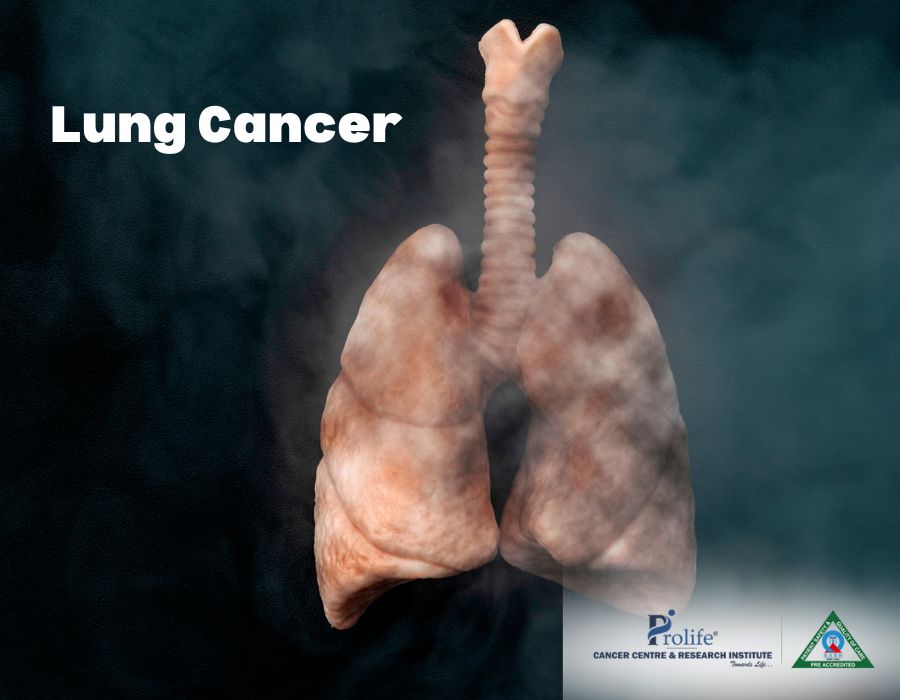Introduction
Lung cancer, one of the most prevalent and deadly cancers worldwide, is a critical health concern that demands attention and understanding. Often referred to as the “silent threat,” lung cancer can develop silently within the body, only revealing its presence when it has progressed to more advanced stages. In this blog, we will delve into the symptoms and causes of lung cancer, shedding light on the importance of awareness and early detection in the battle against this formidable disease.
Lung Cancer Symptoms
Lung cancer symptoms can vary depending on the stage and type of cancer, but they generally manifest as follows:
- Persistent Cough: A persistent, nagging cough that doesn’t seem to go away or worsen over time is a common early symptom of lung cancer. This cough might produce blood-tinged or rust-colored sputum.
- Shortness of Breath: As the tumor grows and affects lung function, shortness of breath, even with minimal physical activity, can become noticeable.
- Chest Pain: Lung cancer can cause chest pain that may worsen with deep breathing, coughing, or laughing. The pain can radiate to the shoulder or down the arm.
- Unexplained Weight Loss: Sudden and unexplained weight loss, often coupled with loss of appetite, could be indicative of lung cancer.
- Fatigue: Individuals with lung cancer often experience persistent fatigue that doesn’t improve with rest.
- Hoarseness: Cancer affecting the lungs can sometimes press against the vocal cords, leading to hoarseness or other voice changes.
- Recurrent Infections: Frequent infections like bronchitis or pneumonia, especially in a person who is a non-smoker or has quit smoking, might be a red flag.
Lung Cancer Causes
Understanding the underlying causes of lung cancer is essential in developing effective prevention strategies. The primary cause of lung cancer is tobacco smoke, whether from smoking or exposure to secondhand smoke. However, there are other risk factors worth noting
- Smoking: Cigarette smoking is the leading cause of lung cancer. The harmful chemicals in tobacco smoke can damage the cells lining the lungs, leading to genetic mutations that result in cancerous growth.
- Secondhand Smoke: Exposure to secondhand smoke can be equally detrimental. Non-smokers who live with or are frequently around smokers are also at risk.
- Radon Gas: Radon is a naturally occurring radioactive gas that can accumulate in homes and buildings. Prolonged exposure to high levels of radon gas is linked to an increased risk of lung cancer.
- Occupational Exposures: Certain workplace environments, such as those involving asbestos, arsenic, and diesel exhaust, can elevate the risk of lung cancer.
- Air Pollution: Long-term exposure to air pollutants, especially in densely populated urban areas, can contribute to the development of lung cancer.
- Genetics: Genetic predisposition can play a role in some cases of lung cancer, particularly in individuals with a family history of the disease.
Conclusion
Lung cancer is a formidable adversary that requires early detection, awareness, and dedicated medical attention. Recognizing the symptoms and understanding the causes are crucial steps in combating this disease effectively. Dr. Sumit Shah, a distinguished cancer specialist at Prolife Cancer Centre in Pune, exemplifies the dedication and expertise needed to navigate the complexities of lung cancer. Dr. Sumit Shah’s commitment to patient care, cutting-edge treatments, and advancing medical knowledge places him at the forefront of the battle against lung cancer.
In conclusion, the battle against lung cancer demands vigilance and a proactive approach. By staying informed about the symptoms, causes, and risk factors associated with lung cancer, we can take steps to protect ourselves and our loved ones. Remember, early detection can make a significant difference in treatment outcomes, and specialists like Dr. Sumit Shah continue to pave the way for a brighter future in the fight against lung cancer.



